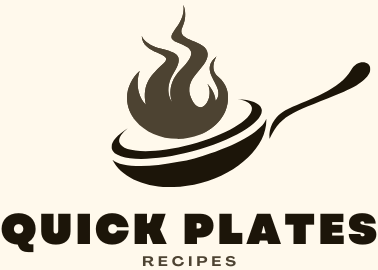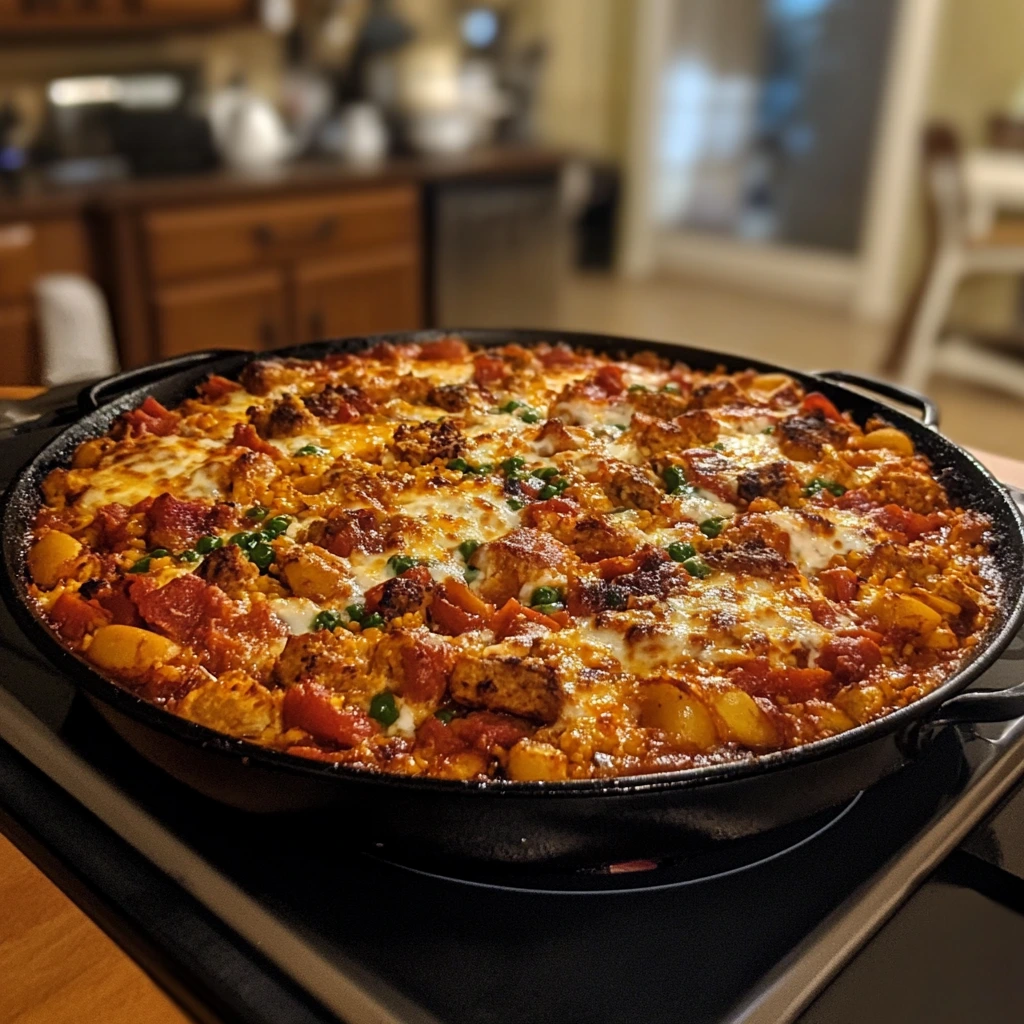Paella is more than just a dish—it’s a celebration of Spanish culture and flavor. Originating in Valencia, this iconic recipe has evolved over centuries, offering a wide variety of versions. Whether you prefer seafood, chicken, or a mix of both, making Simple Paella at home can be surprisingly simple. In this post, we’ll walk you through everything you need to know to cook like a Spanish chef. From essential ingredients to expert tips, you’ll learn how to create a dish that will impress your family and friends while capturing the authentic taste of Spain.
What is Paella and Its Rich History?
The Origins of Paella
Paella’s origins trace back to the region of Valencia on Spain’s eastern coast. The dish was born in rural communities, where farmers would cook over an open flame. They used ingredients that were locally available, including rice, vegetables, and whatever meat they could find. Originally, paella was a simple, hearty meal for families and laborers.
Over time, paella evolved. Seafood was added, particularly along the coast, where fresh fish was abundant. In the mid-19th century, the dish began gaining popularity outside of Valencia, eventually becoming Spain’s national symbol of cuisine. Today, there are several variations, such as paella Valenciana, which traditionally combines rabbit, chicken, and green beans, and seafood paella, which is loaded with shrimp, mussels, and clams. The versatility of this dish is what makes it so beloved around the world.
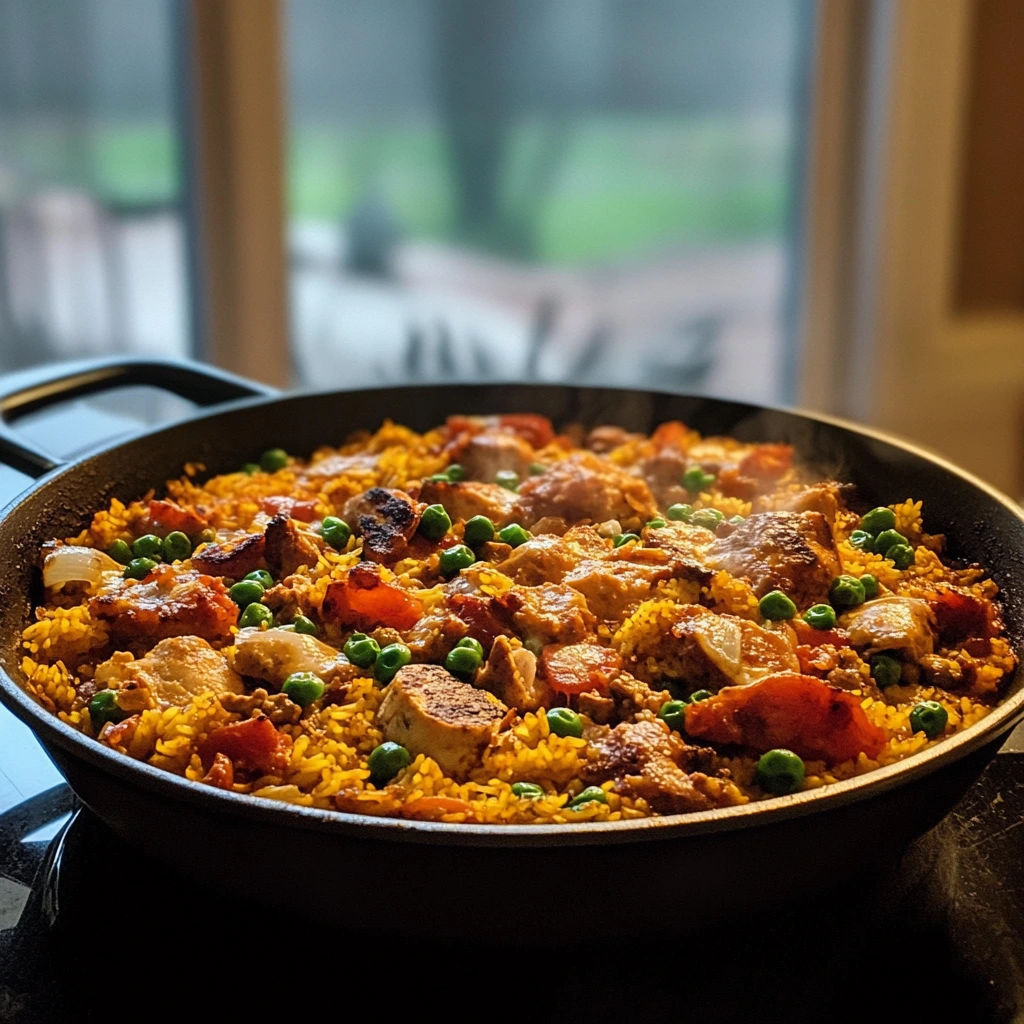
Regional Variations
Paella is a dish with many regional variations, each reflecting the local ingredients and traditions of the area. The most famous version is paella Valenciana, hailing from the Valencia region. This traditional recipe features a mix of rabbit, chicken, green beans, and sometimes snails, along with the essential rice and saffron.
On Spain’s Mediterranean coast, seafood paella reigns. It’s made with a variety of fresh seafood, such as shrimp, mussels, and clams. The use of seafood instead of meat gives this version a lighter, brinier flavor.
In some areas, like Catalonia, paella may include a mix of both meat and seafood, creating a delightful combination. Paella mixta, or mixed paella, is a popular choice for those who enjoy both land and sea flavors together. Each variation adds its own twist, but all versions maintain the essence of this spanish dish: a flavorful, hearty dish that brings people together.
Paella as a Cultural Dish
Paella is more than just a meal; it’s a cultural symbol in Spain. Traditionally, it’s cooked for large gatherings, especially on weekends and holidays. Families and friends come together to enjoy the dish, often sharing it directly from the pan. This communal aspect is key to its significance.
In Valencia, where paella originated, it’s a staple of local festivals like Las Fallas. The dish plays a central role in community celebrations, bringing people together to enjoy food, music, and tradition. The preparation of Simple paella is seen as an art, with each cook bringing their own touch to the recipe.
For many, paella represents the warmth and hospitality of Spanish culture. It’s a dish that tells stories of local ingredients, regional pride, and the joy of sharing a meal. Whether cooked on a family patio or a bustling restaurant, this meal always brings people closer.
Essential Ingredients for the Perfect Simple Paella
Rice and Saffron
Rice and saffron are the heart of any paella recipe. The type of rice used is crucial for achieving the dish’s signature texture. Bomba rice, a short-grain variety, is the best choice. It absorbs liquid without losing its shape, creating the perfect consistency for Simple Paella.
Saffron is equally important. This vibrant spice adds both color and a unique, earthy flavor to the dish. It is often steeped in warm broth before being added to the paella to fully release its aroma. Though saffron can be expensive, it is essential for an authentic experience.
Together, rice and saffron give the dish its defining characteristics. The rice becomes perfectly tender while the saffron provides a golden hue and aromatic depth. Without these two ingredients, paella would not have its unmistakable flavor and appeal. They are truly what make paella a special and iconic Spanish dish.
Key Ingredients in Simple Paella
The key ingredients vary depending on the region and type of paella being made. However, a few ingredients remain essential across all versions. Rice is the backbone of the dish, providing structure and texture. As mentioned, Bomba rice is the preferred variety, known for its ability to absorb liquid while remaining firm.
Saffron is another must-have ingredient. It gives paella its distinct yellow color and rich, aromatic flavor. The addition of olive oil is also vital, as it forms the base for sautéing and enhances the overall flavor profile.
For a traditional paella Valenciana, ingredients like chicken, rabbit, green beans, and tomato are used. In a seafood paella, you’ll find shrimp, mussels, clams, and fish. Other common ingredients include garlic, paprika, and lemon, which add brightness and depth to the dish. Each ingredient plays a role in achieving the perfect balance of flavors.
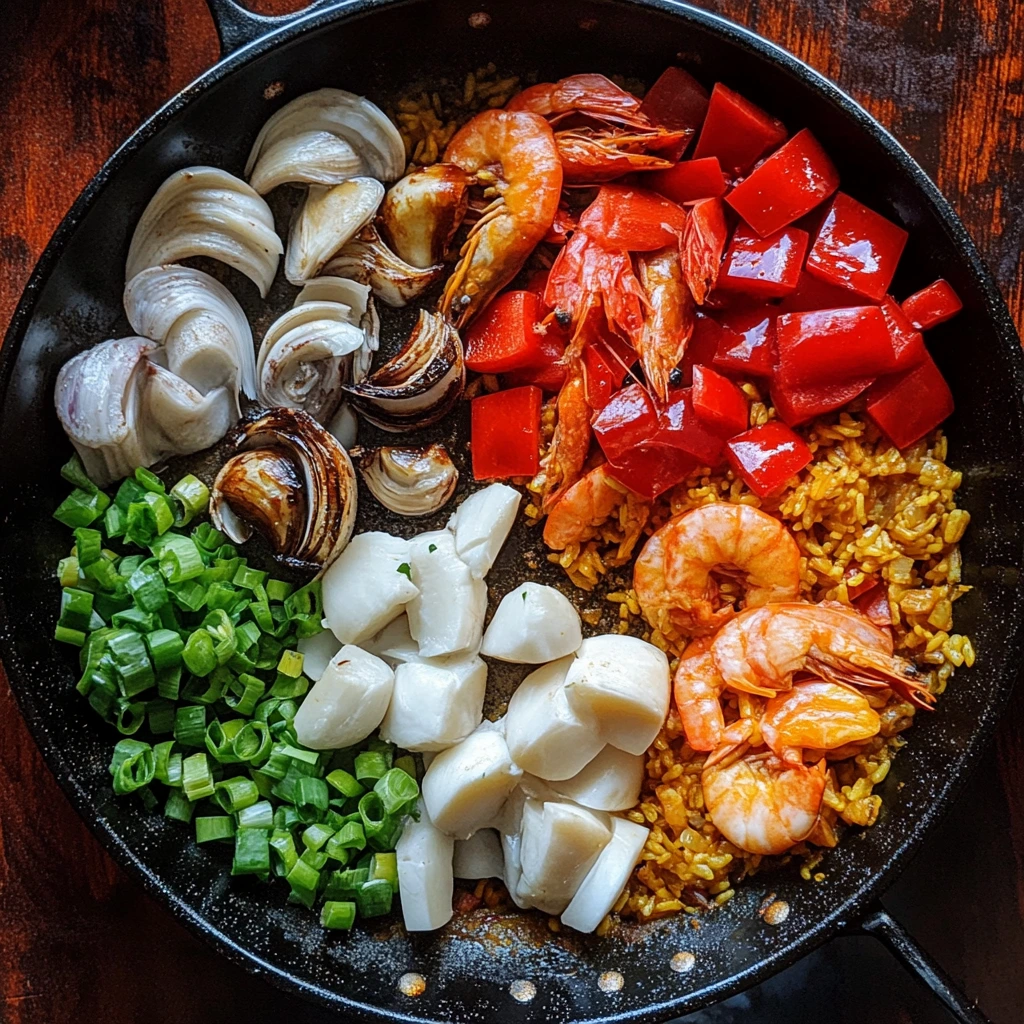
The Importance of Olive Oil
Olive oil is an essential ingredient in Simple Paella, playing a key role in both flavor and texture. Spanish extra virgin olive oil is preferred for its rich, robust taste. It serves as the base for cooking the dish, allowing the other ingredients to blend together harmoniously.
When making paella, olive oil is used to sauté vegetables like onions and peppers, as well as to brown the meat or seafood. This helps to develop a deep, savory foundation of flavor. The oil also helps to create the signature socarrat, the crispy, golden layer of rice at the bottom of the pan.
Beyond flavor, olive oil adds richness and smoothness to the paella without overpowering the other ingredients. It’s a simple yet powerful element that enhances the overall dish, making it both authentic and delicious. For the best results, always use high-quality olive oil to elevate your paella experience.
How to Choose the Right Simple Paella Pan and Equipment
Selecting the Best Paella Pan
Selecting the right pan is crucial for cooking the perfect dish. Paella pans are shallow, wide, and have a flat bottom to ensure even cooking. The material of the pan also affects how the heat is distributed. Carbon steel is the traditional choice, as it heats quickly and evenly. It also develops a natural patina over time, enhancing the flavor of future dishes.
The size of the pan is another important factor. A pan that’s too small will crowd the ingredients, while one that’s too large might dry out the rice. Choose a pan based on the number of servings you plan to make, typically ranging from 10 to 15 inches in diameter.
For beginners, enameled steel pans are also a good option. They require less maintenance and still provide good heat distribution. A well-chosen pan ensures your rice cooks evenly and helps create the perfect socarrat.
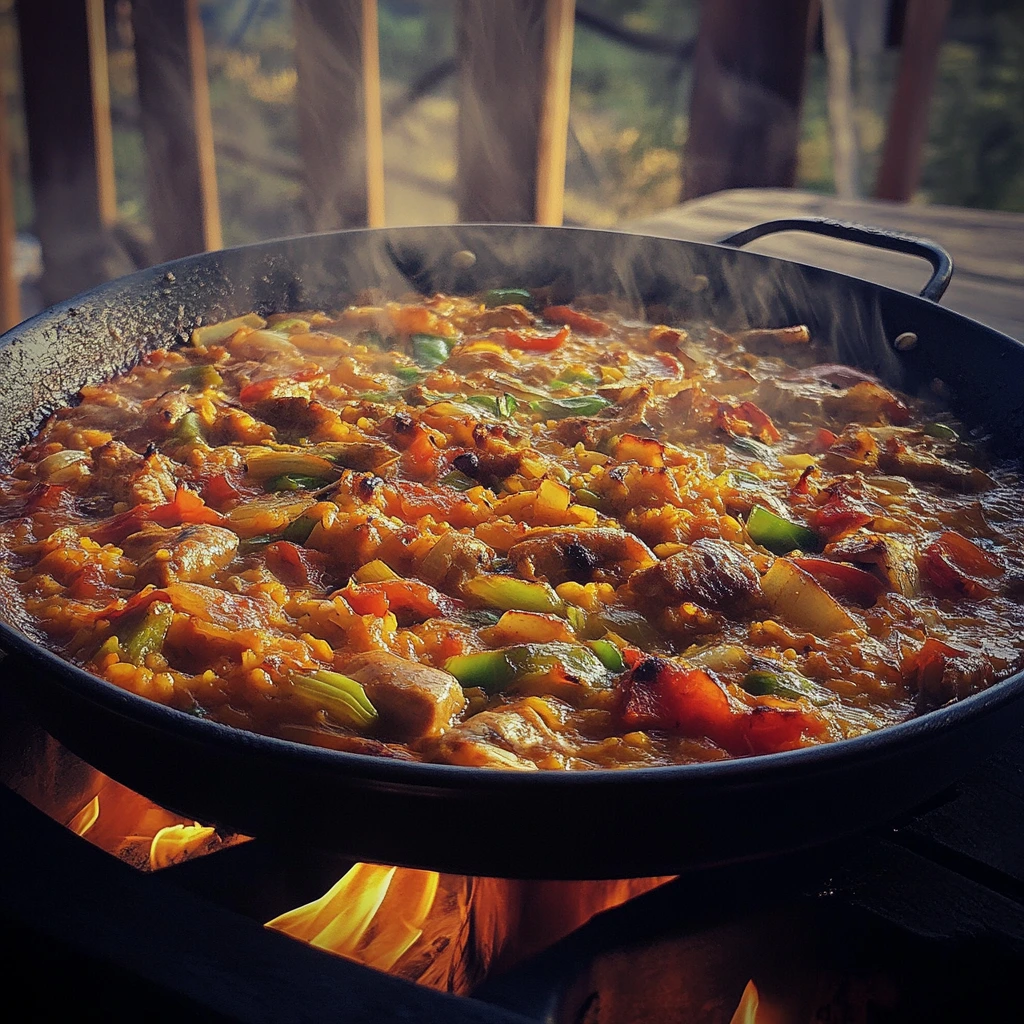
Other Essential Tools for Simple Paella
In addition to a good pan, several other tools are essential for making the perfect paella. A wooden spoon or paella spatula is recommended for stirring, as it won’t damage the pan’s surface. These tools also help you achieve the signature crispy bottom layer, or socarrat.
If you’re cooking outdoors, a paella burner is a great option. It provides consistent, even heat across the pan, which is important for cooking large batches. For indoor cooking, a large stovetop or oven will suffice, but you may need to adjust the heat to prevent burning.
A ladle is also useful for adding stock or broth to the rice. It ensures even distribution of liquid, which is key for perfect rice texture. Finally, a serving spoon and lemon wedges for garnish will help complete the dish, adding a touch of freshness and flavor.
The Role of Paella Rice
The type of rice used in paella is crucial to its texture and overall success. Bomba rice is the most commonly used variety. This short-grain rice absorbs liquid beautifully while maintaining its structure. It creates a tender, yet firm texture that is characteristic of well-cooked paella.
Unlike other types of rice, Bomba rice expands only slightly, allowing the flavors to penetrate deeply without becoming mushy. This rice also ensures that the socarrat, the crispy layer at the bottom, forms perfectly.
Another important factor is the rice-to-liquid ratio. Typically, Simple Paella requires a 1:2 ratio of rice to liquid, though this can vary depending on the specific recipe. The rice should not be stirred once it’s added to the pan, as this can break the grains and disrupt the cooking process. The rice’s role is to absorb the flavors from the broth and spices, creating a balanced and flavorful dish.
Step-by-Step Guide to Cooking Simple Paella Like a Spanish Chef
Step 1: Preparing the Base
The first step in making Simple Paella is preparing the base, or sofrito, which sets the flavor foundation. Start by heating olive oil in your pan over medium heat. Add finely chopped onions and cook until they become translucent. Then, add minced garlic and cook for another minute to release its aroma.
Next, add chopped tomatoes and cook until they break down into a sauce. This creates the rich, flavorful base of your paella. Depending on your recipe, you can also add bell peppers, green beans, or peas at this stage. For extra flavor, season with paprika or a pinch of saffron.
Once the base is ready, it’s time to add your meats or seafood. Sear the proteins to lock in their flavors before adding the rice and liquid. This step ensures that the dish starts with a rich, aromatic foundation that will infuse the rice as it cooks.
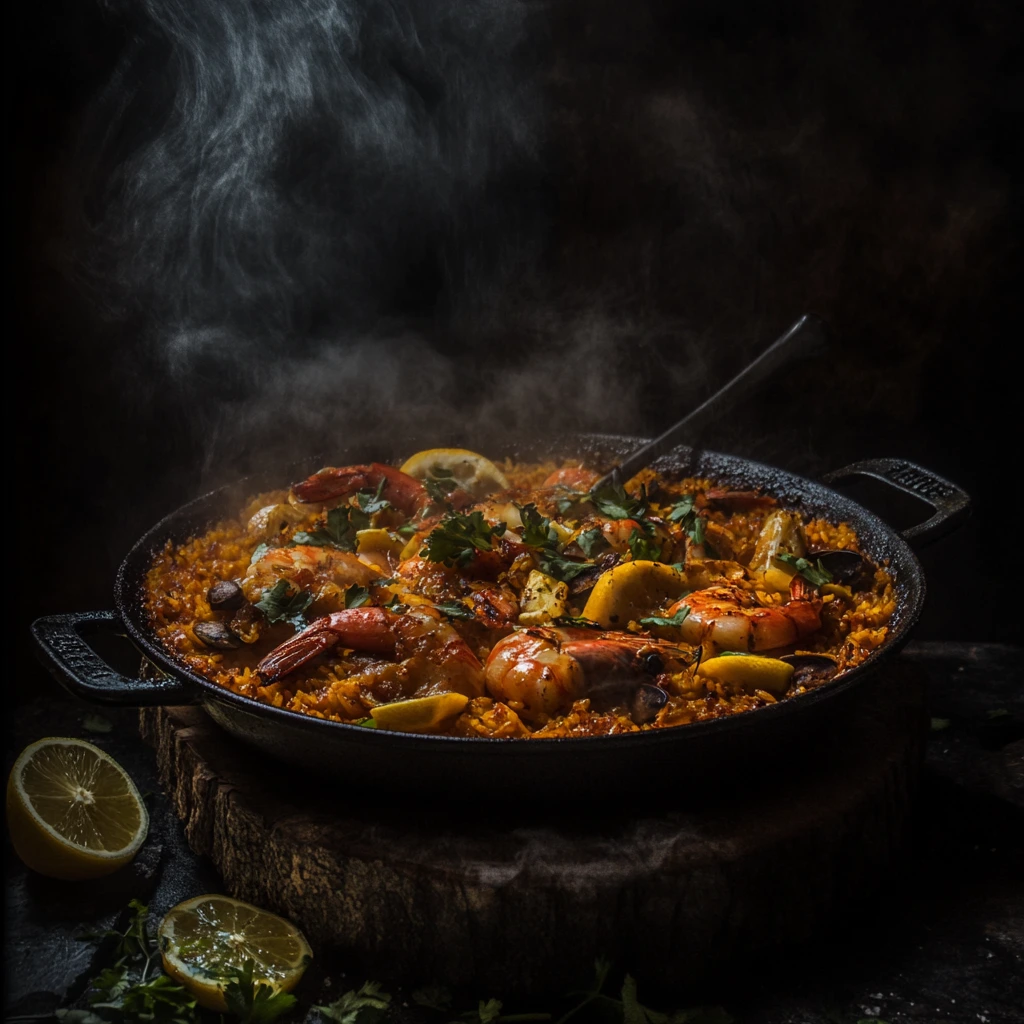
Step 2: Cooking the Simple Paella
Step 2 involves cooking the Simple Paella, where all the flavors come together. Begin by adding your choice of meat, seafood, or both, depending on the type of paella you’re making. Let them brown and sear in the sofrito base to enhance their flavors. This step is key to developing a rich, savory depth.
Once the proteins are browned, add the Bomba rice and stir it into the base, coating it evenly with the oil and spices. Allow the rice to cook for a minute or two, ensuring it absorbs the flavors.
Now, add the broth—a mix of chicken, seafood, or vegetable stock—along with the saffron and seasonings. Stir once, then leave the rice undisturbed to cook. The key is to avoid stirring after this point, as stirring can break the rice and ruin the texture. Let the paella simmer gently, allowing the liquid to absorb and the rice to become perfectly tender.
Step 3: Perfecting the Simple Paella
Step 3 is all about perfecting the Simple Paella and ensuring it has the ideal texture and flavor. Once the rice has absorbed most of the liquid, increase the heat slightly to create the signature socarrat, the crispy bottom layer. This is a delicate process, so keep an eye on it to avoid burning.
As the rice cooks, do not stir. Stirring after adding the liquid can break the rice grains and prevent the crispy layer from forming. Let the paella simmer for 10-15 minutes, depending on your pan size and heat level.
Once the liquid is absorbed and the rice is tender, remove the paella from the heat. Cover it with a clean kitchen towel and let it rest for 5-10 minutes. This resting period allows the flavors to settle, and the rice continues to steam gently, resulting in a perfect, flavorful dish. Garnish with fresh lemon wedges before serving for a burst of brightness.
Tips and Tricks from Spanish Chefs to Elevate Your Simple Paella
The Right Heat for Crispy Socarrat
The right heat is essential for achieving the perfect socarrat, the crispy, golden layer of rice at the bottom of the pan. After the liquid has mostly absorbed, increase the heat to medium-high. This high heat will help form the crispy layer without overcooking the rice.
However, timing is key. The socarrat develops in the final minutes of cooking, so be cautious not to burn it. You should hear a faint crackling sound as the rice starts to crisp. To avoid burning, reduce the heat slightly if it gets too loud or intense.
Allow the paella to cook for 5-10 minutes on high heat, ensuring an even crispy layer. Once the rice has formed a golden crust, remove the pan from the heat. Let it rest for a few minutes before serving to allow the crispy layer to settle and firm up, adding texture and flavor to your dish.
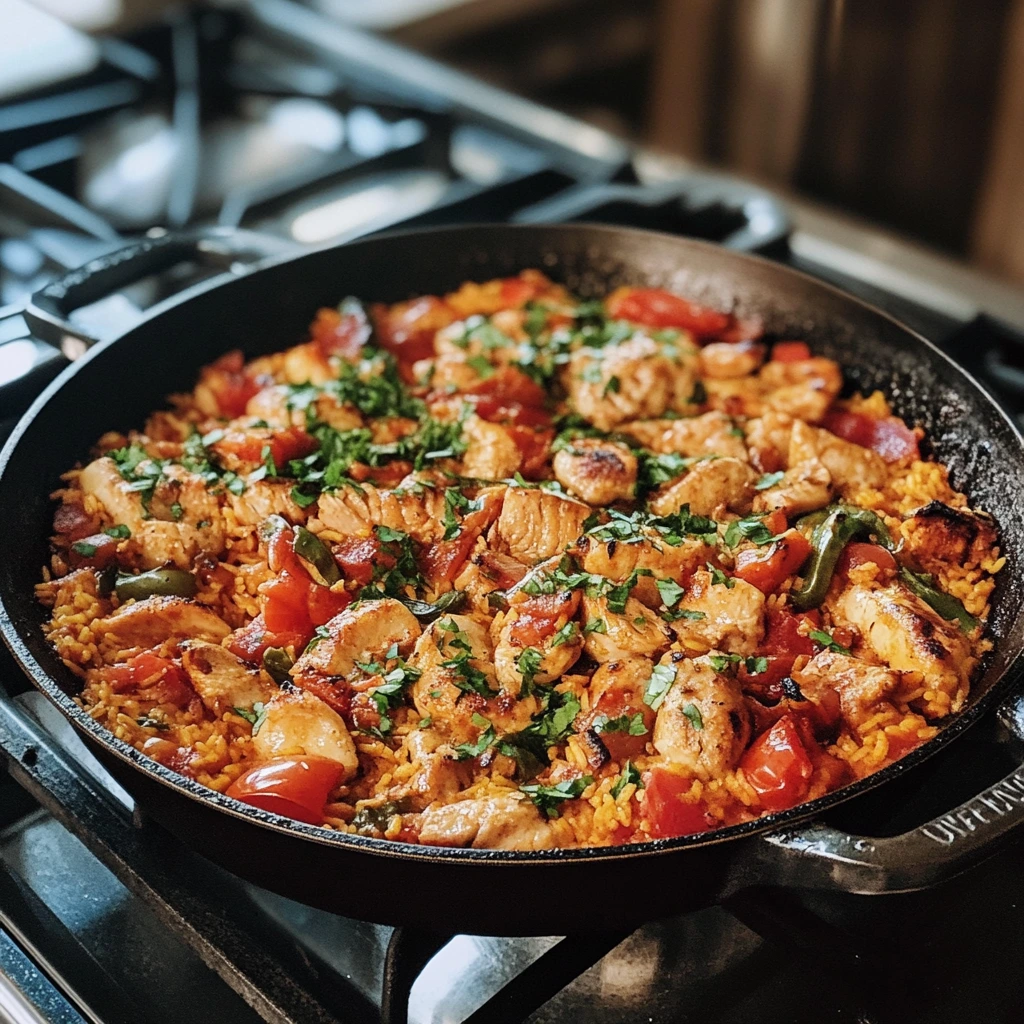
Flavor Boosters
Flavor boosters are essential for taking your paella to the next level. Paprika is one of the most important seasonings, offering both color and depth. Smoked paprika adds a rich, smoky flavor that complements the saffron perfectly.
Another great flavor booster is garlic. Adding minced garlic to the sofrito or cooking it with your proteins helps to infuse the dish with savory richness. You can also experiment with a dash of cayenne pepper or chili flakes for some heat.
Lemon juice adds a bright contrast to the dish’s richness. Squeeze a bit over the finished Simple Paella or serve lemon wedges alongside. Fresh herbs, like parsley or rosemary, can also enhance the overall flavor with their fresh, aromatic notes.
Don’t forget the seafood stock or chicken broth. Using homemade stock can boost the overall flavor, giving the rice a deeper, more complex taste.
Serving Your Simple Paella
Serving paella is as much about presentation as it is about flavor. Traditionally, paella is served directly from the pan, which keeps the dish warm and visually appealing. This communal style of serving encourages sharing, adding to the social experience.
Before serving, garnish your Simple Paella with fresh lemon wedges. A squeeze of lemon enhances the flavors and balances the richness. You can also sprinkle fresh herbs like parsley or thyme over the top for a burst of color and freshness.
Paella is often accompanied by a light salad or crusty bread to complement the flavors. For an authentic touch, invite guests to gather around the pan and enjoy this dish together, savoring the rich flavors and crispy socarrat. This is the heart of the paella experience.
Conclusion
Making Simple Paella at home is a rewarding experience that brings the flavors of Spain to your table. By following these steps, from preparing the base to perfecting the crispy socarrat, you can create a delicious, authentic paella.
Experiment with different ingredients and techniques to suit your taste. Whether it’s a classic paella Valenciana or a mixed version with seafood, paella is a versatile dish that can be adapted to any occasion. So, gather your ingredients, invite friends, and enjoy a flavorful, shared meal that celebrates the essence of Spanish cuisine.
